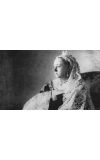
25 May 2012 12:11:03
The thoughts, sorrows, dreams, doubts, political opinions, gossip and passions of Queen Victoria, poured on to 43,000 pages of her private journals, have been launched online by her great-great-granddaughter Queen Elizabeth.
"It seems fitting that the subject of the first major public release of material from the royal archives is Queen Victoria, who was the first monarch to celebrate a diamond jubilee," the Queen writes in a message to mark the launch, which follows an eight-month digitisation project to celebrate her own jubilee by the royal archives, the Bodleian library in Oxford and the information company ProQuest.
The journals track Victoria's meetings with prime ministers, the births of her children – "Dr Snow administered 'that blessed Chloroform'" she wrote after Leopold in 1853 – war and peace, the Great Exhibition in the Crystal Palace and, in passages which are often a rip-roaring read, her overwhelming love for her husband. "It was with some emotion that I beheld Albert – who is beautiful," she wrote on 10 October 1839, and after they married four months later: "He clasped me in his arms, and we kissed each other again and again!"
Her desolation after his death in 1861 aged 42, probably of typhoid – said to be caused by the Windsor Castle drains – seeps from the pages: "I have been unable to write my journal since my beloved one left us, and oh with what a heavy broken heart I enter a new year without him."
Although countless biographers and historians have raided the journals, they have never been published in full, and have only been available by appointment at the library in Windsor Castle. Access to the site will be free permanently to all UK users, and to anyone in the world until the end of June. A libraries version will also be available worldwide.
The earliest volumes are in Victoria's handwriting, and later ones were transcribed by her private secretary and her daughter Beatrice – who heavily edited the journals she transcribed, and to the anguish of historians destroyed the originals.
They begin in 1832, when she was 13: "This book, Mama gave me that I might write the journal of my journey to Wales in it," and end in 1901, just 10 days before her death: "Had a good night and could take some breakfast better. Took an hour's drive at half-past two. It was very foggy, but the air was pleasant."
News of battles far away regularly arrives at her breakfast table: at Osborne on the Isle of Wight, on 5 February 1885 – "a fine day, my cold somewhat better" – she learns "dreadful news, Khartoum fallen, Gordon's fate uncertain. All greatly distressed."
She describes her own coronation in great detail, a day when she was woken at 4am by celebratory gun salutes from St James's Park, "and could not get much sleep afterwards from the noise of the people, bands &c". When finally dressed, and in the state coach on the way to Westminster Abbey, "the crowds of people exceeded what I have ever seen … multitudes, the millions of my loyal subjects who were assembled in every spot to witness the Procession. Their good humour and excessive loyalty was beyond everything."
She gives an equally comprehensive description of the last diamond jubilee, 22 June 1897, "a never to be forgotten day".
"No one ever, I believe has met with such an ovation as was given to me, passing through those 6 miles of streets … The crowds were quite indescribable and their enthusiasm truly marvellous and deeply touching."
She would undoubtedly now have tweeted and blogged the occasion. She – like Albert – embraced new technology, including photography, film and voice recording. Before she left the palace, she wrote: "I touched an electric button by which I started a message which was telegraphed through the whole Empire."

